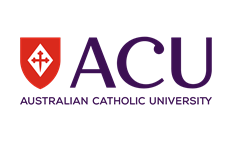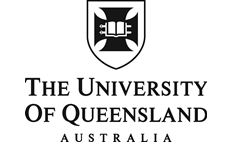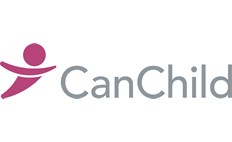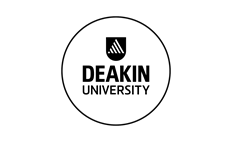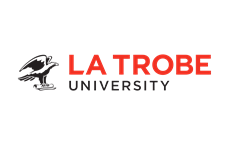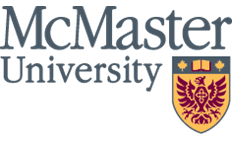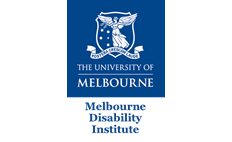Supporting people to be active and keep being active through their lifespan, in whatever activities they choose
- Published
- Tuesday, December 5, 2023 - 12:00 PM
Kia ora katou
My name is Gaela Kilgour and I completed my PhD in May 2022. During my studies, I was kindly supported by the CRE-CP and CP-Achieve. I had three papers from my PhD published in September and I would like to share my work.
My interest lies in how we can support people to be active and keep being active through their lifespan, in whatever activities they choose. The starting point is having a go – by participating. Participation for my research as defined using the terms attendance (being there) and involvement (“think about how you felt, how much you were thinking about the activity and how hard you tried during each activity”).
Firstly, I looked at the literature to see if current physical activity interventions helped children and adolescents with CP (0-18 years) keep being active for at least one month beyond the programme. While there are hundreds of different physical activity interventions available, most do not consider if the physical gains from the intervention lead to more participation. Attendance was measured in 12 studies and improved for a maximum of six months. Three studies measured involvement and only one study showed gains (in enjoyment as one measure of involvement) for one month after completing the intervention. Any increased participation appears to be short term and does not lead to ongoing, sustained participation. A gap in current clinical practise made me think about what and how we are currently delivering our physical activity interventions to ensure benefits last longer than six months.
Based on new work supporting the use of participation focused interventions (starting at participation), I developed a high-level mobility programme in Christchurch, New Zealand. Training the skill of running was chosen as the high-level activity due to the popularity of running within the community and ease of access to run – its free, can be performed anywhere and has many health and social benefits. And of course – because I love to run! My PhD developed and was titled: “Effects of a community-based high-level mobility programme (HLMP) on sustained participation in physical activity by adolescents with cerebral palsy: A single subject research design study (SSRD). A SSRD follows participants in-depth before (establish a baseline), during and after the intervention to determine a pattern of change for that person. My primary aim was to assess if the HLMP could promote sustained physical activity participation (attendance and involvement) in the adolescents within their community context. Attendance looked at how often, how many and how long someone was active (frequency, diversity and duration respectively). My secondary aim was to determine if the adolescents could improve and sustain their physical capacity in running (how well they run). I also wanted to understand the adolescents’ and their parents’ perspectives on ‘being active’ and ‘being involved’. I explored the experience of participation in physical activity (PA), the role of long-term participation in PA, and importance of remaining active for life.
Methods:
Eight adolescents with cerebral palsy, Gross Motor Function Classification System levels I-II, 11-16 years, participated in 24 community-based group HLMP sessions across 12 weeks. Sessions were held twice weekly at a high school sport grounds or local playground. Participants set attendance, involvement, and physical performance goals, completed activity diaries over 58 weeks and undertook physical capacity running tests on four occasions. Goals were measured fortnightly. Diary measures of activity frequency, diversity and duration (attendance) and involvement level were collected weekly across baseline (4-6 weeks), intervention (12 weeks), and nine months follow-up (including Covid lockdown). The adolescents and 12 parents were interviewed before, after the 12 weeks and 9-months following the HLMP. Interpretive description methods were used to determine the clinical question and create change. Thirty-eight interviews were coded, analysed, and interpreted, informed by audit information, reflective journaling, and team discussions.
Results:
The adolescents attended a median of 23 of 24 HLMP sessions. No adverse events occurred with the training. Goals for involvement were consistently achieved through all phases. Attendance goal/s attainment was highest during COVID lockdown with adolescents reporting they had more time to do activities they wanted to do. Physical performance goal/s attainment was highest during intervention phase but reduced at nine months follow-up. The adolescents’ diaries showed frequency of participation in physical activities varied greatly across study phases (range 0–33 episodes/week) with stable variety of activities and generally high ‘involvement’. During the intervention, seven adolescents improved their physical capacity for running tests (speed, endurance, power and skills) and six maintained, or increased, the gains six months later.
The interviews revealed adolescents and their parents highly valued being active now and into adulthood. Sustainable participation in PA required adolescents and families to navigate complex environments (interpersonal, organisational, community, and policy). Core themes were: ‘Just Doing it’, ‘Getting the Mix Right’ (right people, right place, right time), ‘Balancing the Continua’ and ‘Navigating the Systems’. The continua involved balancing intra-personal attributes: ‘I’ll try anything’ through to ‘I’ll do it if I want to’ and ‘It’s OK to be different’ through to ‘It sucks being disabled’. The themes lead to the development of a journey that adolescents and their parents take when trying to be active now and into the future. A waka (Māori canoe) was used to show the complexity of being active and staying active (Kilgour et al 2023, Children)
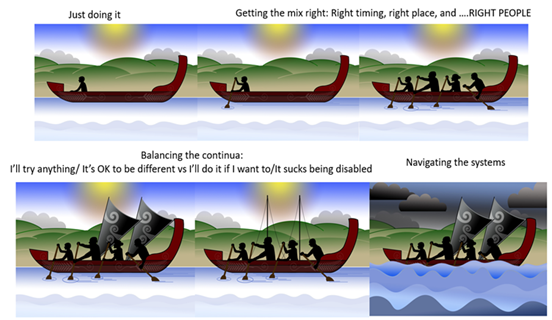 Figure 1 Journey of Sustained Participation
Figure 1 Journey of Sustained Participation
Note. The development of this Taonga (treasure) is endorsed and supported by Toriana Hunt, Kaimahi Māori, Canterbury District Health Board & Manawhenua Ki Waitaha Charitable Trust Trustee
The interviews also focused on involvement in physical activity (motivation, satisfaction, engagement, persistence, and perhaps social connections). Four themes were developed: ‘Turning up is not enough’ (‘There’s no point being there if you’re not involved’); ‘In it all the way’, ‘Changes on a dime’, and ‘What works for me’. Adolescents and parents often disagree about what is involvement and helps sustain involvement. Encouraging involvement in physical activity can be a source of family conflict from a young age. Being ‘very involved’ related to high levels of focus, concentration, effort, but not always enjoyment (Kilgour et al., 2023 Disability and Rehabilitation).
In it all the way (Being involved)
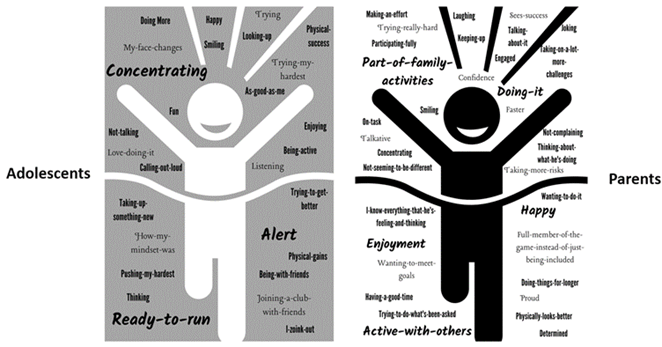
What works for me
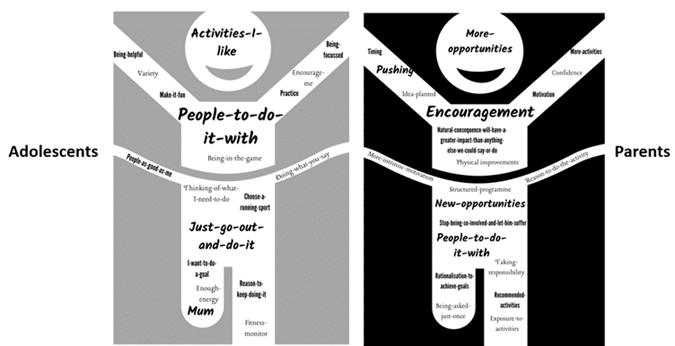
Conclusion:
Most participants improved physical capacity following the HLMP but only some had sustained attendance and involvement in physical activity. The journey to sustainable participation was complex and dynamic for the adolescents and their families; yet seen as essential for long term wellbeing. Experiences of successful journeys are needed to help adolescents with CP “stay on track” to sustainable participation. Focusing on enjoyment as the key experience of involvement understates the complexity and dynamic nature of involvement. ‘Being involved’ is not always easy and may not mean the absence of discomfort or effort. Optimising the individuals’ involvement continuum during physical activity may be essential to promote lifelong participation.
Take home findings and messages:
- Promoting participation in physical activity is everyone’s responsibility
- Adolescents with CP need to be more active
- An individualised HLMP can result in physical and participation gains beyond the expectation of the adolescents and their families in some but not all adolescents
- Having a preferred activity promotes participation, motivation and confidence
- Being active is hard work
- Fatigue is real
- The desire to be active is hard to put in practice for most and requires support
- Adolescents require at least one essential motivator
- The desire for competition, skill development, being active with friends and families, should not be assumed to be the same for everyone
- Involvement exists on an individualised continuum
- Learning strategies to manage the involvement continuum are essential
- Navigating physical activity opportunities is complex; sustaining participation is even more challenging and requires more long-term studies
Articles
You can read more about each article by clicking on the titles below:
- Kilgour, G.M., Stott, N.S., Steele, M., Adair, B., Hogan, A., & Imms, C. (2023). Effects of a 12 week community-based high-level mobility programme on sustained participation in physical activity by adolescents with cerebral palsy: a single subject research design study. Disability and Rehabilitation 1-11.
- Kilgour, G., Stott, N.S., Steele, M., Adair, B., Hogan, A., & Imms, C. (2023). The journey to sustainable participation in physical activity for adolescents living with cerebral palsy. Children 10(9):1-23.
- Kilgour, G., Stott, N.S., Steele, M., Adair, B., Hogan, A., & Imms, C. (2023). More than just having fun! Understanding the experience of involvement in physical activity of adolescents living with cerebral palsy. Disability and Rehabilitation 1-12
- Kilgour, G., Adair, B., Stott, N. S., Steele, M., Hogan, A., & Imms, C. (2021). Do physical activity interventions influence subsequent attendance and involvement in physical activities for children with cerebral palsy: A systematic review. Disability and Rehabilitation 1-17
Authors
- Dr Gaela Kilgour. The University of Melbourne, Melbourne
- Professor Ngaire Susan Stott. The University of Auckland, New Zealand
- Dr Michael Steele. Australian Catholic University, Brisbane
- Dr Brooke Adair. Grow Strong Children’s Physiotherapy, Melbourne
- Dr Amy Hogan. Cerebral Palsy Society, New Zealand
- Professor Christine Imms. Department of Paediatrics, The University of Melbourne, Melbourne


